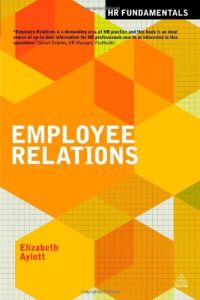Join getAbstract to access the summary!

Join getAbstract to access the summary!
Elizabeth Aylott
Employee Relations
Kogan Page, 2014
What's inside?
This review of the basics of employee relations will help HR managers become “more strategic and less reactive.”
Recommendation
Elizabeth Aylott covers the basics of human resources and employee relations in this useful, well-informed manual. She proves hard-nosed, management-oriented and targeted on the bottom line. Aylott’s technical, dry treatise – with its abstruse HR definitions and academic disagreements on theory and practice – may be too insider-focused, though practitioners in multinational companies will gratefully turn to it as a reference work. Given her orientation to the UK, some details of legalities may be more pertinent to HR professionals there than elsewhere. getAbstract recommends her guidance and expertise to HR practitioners and students in related fields who face sweeping changes in today’s workplace. She sets out with a goal these readers will share: helping HR departments and managers become “more strategic and less reactive.”
Summary
About the Author
Elizabeth Aylott teaches in the business school at London’s BPP University, where she lectures on human resources and resolving employment disputes.

















Comment on this summary